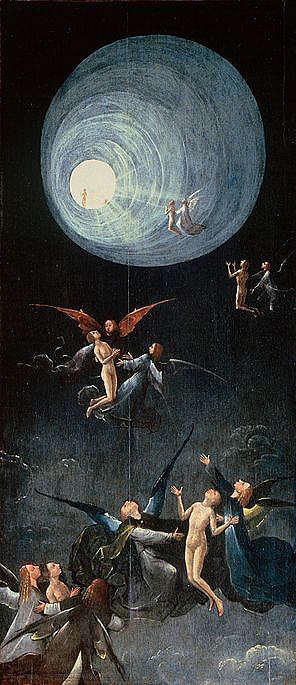Ascent of the Blessed was originally part of a polyptych - four oak panels, painted in oil after 1490.
Although no signature or date has been found, careful study and analysis of the style and technique involved in the painting has been carried out and the work has been attributed to Hieronymus Bosch.
Dating of the wood showed that the youngest growth ring was from 1473 and it has been deemed unlikely that the painting was started before 1486.
The four panels together depicted "Four Visions of the Hereafter" and traditional Christian beliefs about reward and punishment. Two panels showed the route to Hell for sinners, namely "Hell" and the "Fall of the Damned into Hell".
The other pair of panels suggested the reward for people who lived a righteous life, an "Earthly Paradise" and this particular panel, "Ascent of the Blessed". The reverse of the panels were also painted, in an unusual marbled affect.
In this image, robed and winged angels appear to be escorting the naked souls of the blessed towards a segmented corridor or "tunnel of light". The angels and the blessed souls gaze upwards towards the divine light in the narrow tapering corridor.
They appear to wait their turn to ascend. One of the angels has bright red wings. At the end of the tunnel two figures are present and what appears to be a silhouette of another angelic being. The two figures appear to be waving or greeting the first soul who is being escorted into the tunnel by a single angel.
What is particularly interesting about this painting is that Bosch appears to have captured modern day ideas about near death experiences. It is not known whether Bosch himself had experienced anything like this, but clearly his image of ascending towards a bright tunnel of light to meet past family and friends, seems to match the experiences of near death, that survivors often describe.
The Ascent of the Blessed is held in the Venice, in the Palazzo Ducale and more recently the Palazzo Grimani where this piece and other important works by Bosch, are undergoing further conservation and restoration in order to ensure that these amazing, ancient works of art are preserved for the future.




